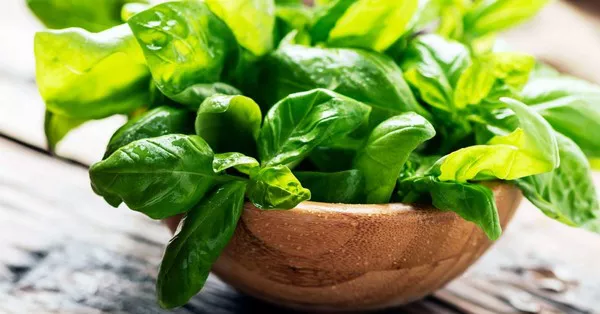Flower pots add a touch of natural beauty and vibrancy to our homes and gardens. However, the charming presence of chipmunks can quickly turn these pots into targets for their curious exploration and potential damage. Dealing with chipmunks in flower pots requires a combination of proactive measures, safe deterrents, and thoughtful strategies. This article dives into the world of chipmunk-related challenges, providing insights into why these critters are drawn to flower pots, how to prevent their intrusion, and effective methods for keeping chipmunks out of your cherished containers.
Understanding Chipmunk Behavior and Attraction to Flower Pots
Chipmunks, with their small size and curious nature, often see flower pots as prime spots for foraging and even nesting. These pots offer a convenient shelter, a potential source of food, and an appealing location for hiding. The following factors contribute to chipmunks’ attraction to flower pots:
1. Food Sources: Chipmunks are primarily herbivores, feeding on seeds, nuts, and fruits. Flower pots can be enticing as they may contain edible plants, seeds, or remnants of fallen fruits.
2. Shelter and Nesting: The cozy space within a flower pot provides chipmunks with shelter from predators and harsh weather. The warmth and protection make these pots attractive nesting sites as well.
3. Curiosity: Chipmunks are naturally curious creatures. They may explore flower pots in search of hidden treasures or simply to satisfy their inquisitive nature.
Preventive Measures to Keep Chipmunks Away
Taking proactive steps to deter chipmunks from invading your flower pots is key to maintaining the beauty of your garden and the health of your plants. Consider the following preventive measures:
1. Elevate Pots: Elevating flower pots off the ground, using platforms or plant stands, can make it more challenging for chipmunks to access them. Make sure the platforms are stable and not easily tipped over.
2. Choose Deterrent Plants: Opt for plants that chipmunks are less likely to find appealing. Herbs like rosemary, mint, and lavender, along with daffodils and alliums, are known to be less attractive to these critters.
3. Physical Barriers: Placing wire mesh or hardware cloth over the soil in your pots can prevent chipmunks from burrowing and digging. Ensure that the mesh has small enough openings to deter chipmunks from squeezing through.
4. Natural Repellents: Some natural repellents, such as crushed red pepper flakes, garlic, or strong-smelling herbs, can deter chipmunks. Sprinkle these around the pots, and remember to reapply after rain.
Effective Methods to Keep Chipmunks Out of Flower Pots
If preventive measures prove insufficient, employing specific methods to discourage chipmunk activity becomes essential. These methods strike a balance between deterring chipmunks and ensuring the safety of your plants:
1. Ultrasonic Repellents: Ultrasonic devices emit high-frequency sounds that are unpleasant to chipmunks and other pests. Place these devices near the flower pots to create an uncomfortable environment for chipmunks.
2. Commercial Repellents: Several commercial repellents are available that use scents and tastes chipmunks dislike. Apply these according to the manufacturer’s instructions and reapply after rain.
3. Predator Scents: The scent of predators, such as foxes or owls, can discourage chipmunks. Products containing predator urine or scents can be strategically placed around the pots.
4. Motion-Activated Devices: Motion-activated sprinklers or lights can startle chipmunks and deter them from approaching flower pots. These devices use sensors to activate when chipmunks are detected.
5. Trapping and Relocation: Live traps can be used to capture chipmunks for relocation. Ensure that you follow local regulations and guidelines for trapping and relocating wildlife.
Maintaining a Balanced Ecosystem
While keeping chipmunks out of flower pots is essential for preserving your plants, it’s also important to maintain a balanced ecosystem. Chipmunks play a role in seed dispersal and insect control. If chipmunk populations are overwhelming, consider the following strategies:
1. Provide Alternative Food Sources: Set up bird feeders or designated feeding areas with seeds and nuts to divert chipmunks from your flower pots.
2. Natural Habitat Enhancement: Create a more inviting habitat away from your flower pots by providing shelter and natural food sources. This can help balance chipmunk populations in your area.
3. Consulting Experts: If chipmunk populations become a persistent issue, consult with local wildlife experts or pest control professionals. They can provide guidance on managing chipmunk activity while respecting local wildlife regulations.
Conclusion
Maintaining the allure of flower pots while mitigating chipmunk intrusion requires a combination of understanding chipmunk behavior, implementing preventive measures, and utilizing effective deterrent methods. By elevating pots, using physical barriers, and applying natural or commercial repellents, you can discourage chipmunks from accessing your cherished containers. Striking a balance between deterring chipmunks and promoting a healthy ecosystem ensures that your garden remains a haven of natural beauty. Remember that while it’s important to protect your plants, coexisting with chipmunks and other wildlife contributes to the intricate tapestry of nature that surrounds us.


